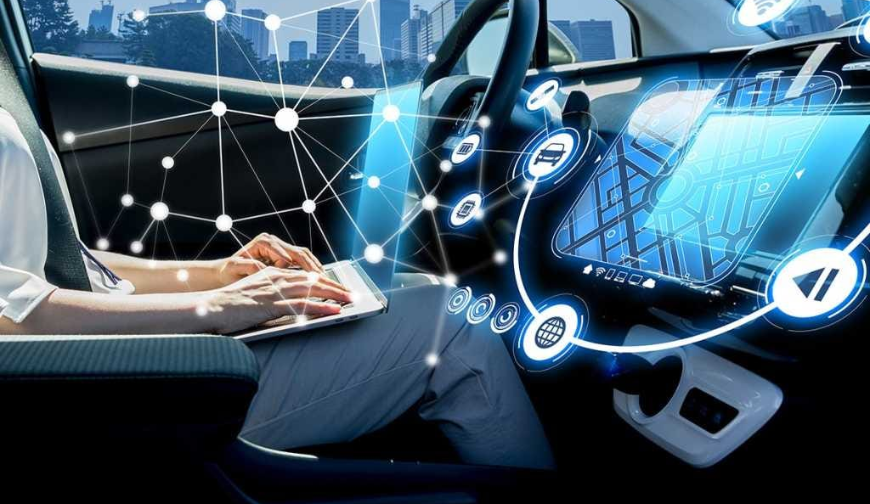In recent years, the concept of autonomous vehicles has shifted from science fiction to a tangible reality. These vehicles, equipped with cutting-edge artificial intelligence (AI) systems, are poised to revolutionize transportation as we know it.
Introduction to Autonomous Vehicles
Autonomous vehicles, commonly referred to as self-driving cars, are vehicles capable of navigating and operating without human intervention. This groundbreaking technology utilizes a combination of sensors, cameras, radar, lidar, and sophisticated AI algorithms to perceive the environment and make real-time decisions.
The Role of AI in Autonomous Vehicles
AI plays a central role in the functioning of autonomous vehicles. Machine learning algorithms enable these vehicles to analyze vast amounts of data, learn from experience, and improve their decision-making capabilities over time. Sensor technologies provide essential inputs to the AI system, allowing the vehicle to perceive its surroundings accurately.
Benefits of Autonomous Vehicles
Safety Improvements
One of the most significant advantages of autonomous vehicles is their potential to enhance road safety. By eliminating human error, which is a leading cause of accidents, these vehicles have the potential to significantly reduce the number of traffic-related fatalities and injuries.
Efficiency and Productivity
Autonomous vehicles can optimize transportation efficiency by minimizing traffic congestion and streamlining routes. They can also increase productivity by allowing passengers to use travel time more effectively, whether for work or leisure activities.
Environmental Impact
The adoption of autonomous vehicles could lead to a reduction in fuel consumption and greenhouse gas emissions. By optimizing driving patterns and reducing idling time, these vehicles can contribute to a more sustainable transportation system.
Challenges and Concerns
Despite their potential benefits, autonomous vehicles also pose several challenges and concerns that need to be addressed.
Regulatory Issues
The widespread adoption of autonomous vehicles raises complex regulatory questions regarding liability, insurance, and safety standards. Policymakers must develop clear guidelines and regulations to ensure the safe integration of these vehicles into existing transportation systems.
Cybersecurity Risks
Autonomous vehicles rely heavily on interconnected digital systems, making them vulnerable to cybersecurity threats such as hacking and malware attacks. Ensuring the security of these systems is essential to prevent potential risks to passenger safety and privacy.
Ethical Dilemmas
Autonomous vehicles are programmed to make split-second decisions in potentially life-threatening situations. Resolving ethical dilemmas, such as determining how the vehicle should prioritize the safety of occupants versus pedestrians, poses significant challenges for developers and policymakers.
Current Applications of Autonomous Vehicles
Autonomous vehicles are already making waves across various industries and sectors.
Transportation Industry
Companies in the transportation industry are exploring the use of autonomous vehicles for ride-hailing services, public transportation, and long-haul trucking. These vehicles have the potential to lower operating costs and improve efficiency for fleet operators.
Delivery Services
Delivery companies are experimenting with autonomous vehicles for last-mile deliveries. These vehicles can navigate urban environments more efficiently, reducing delivery times and costs.
Personal Vehicles
Automakers are developing autonomous features for personal vehicles, such as advanced driver-assistance systems (ADAS). These systems can enhance safety and convenience for drivers by assisting with tasks such as parking and lane-keeping.
Future Prospects and Innovations
The future of autonomous vehicles holds tremendous promise for further innovation and integration.
Integration with Smart Cities
Autonomous vehicles will play a crucial role in the development of smart cities, where transportation systems are seamlessly integrated with urban infrastructure. These vehicles can help reduce traffic congestion, improve air quality, and enhance overall quality of life for city residents.
Advancements in AI Technology
Continued advancements in AI technology will enable autonomous vehicles to become even more sophisticated and capable. Machine learning algorithms will continue to evolve, allowing vehicles to learn from experience and adapt to changing environments more effectively.
Economic Implications
The widespread adoption of autonomous vehicles is expected to have far-reaching economic implications. Industries such as transportation, logistics, and automotive manufacturing will undergo significant transformations, creating new opportunities for innovation and growth.
Conclusion
Autonomous vehicles powered by AI inventions are set to transform the way we think about transportation. While there are challenges and concerns that need to be addressed, the potential benefits of this technology are undeniable. By enhancing safety, efficiency, and sustainability, autonomous vehicles have the power to revolutionize our cities and improve the quality of life for people around the world.
Unique FAQs
- Are autonomous vehicles legal?
- The legality of autonomous vehicles varies by jurisdiction. Many countries and regions have started to develop regulations to govern the testing and deployment of these vehicles on public roads.
- How do autonomous vehicles perceive their surroundings?
- Autonomous vehicles use a combination of sensors, including cameras, radar, lidar, and ultrasonic sensors, to perceive their surroundings and detect obstacles, pedestrians, and other vehicles.
- What are the main challenges facing autonomous vehicle development?
- Some of the main challenges facing autonomous vehicle development include regulatory hurdles, cybersecurity risks, and ethical dilemmas surrounding decision-making algorithms.
- Are autonomous vehicles safer than human-driven vehicles?
- While autonomous vehicles have the potential to reduce accidents caused by human error, they are not immune to technical failures or unexpected situations. Continued testing and refinement are necessary to improve their safety.
- How soon can we expect widespread adoption of autonomous vehicles?
- Widespread adoption of autonomous vehicles is still several years away, as various technological, regulatory, and societal challenges need to be addressed. However, pilot programs and testing initiatives are already underway in many cities around the world.
